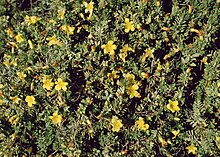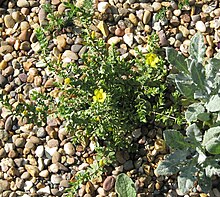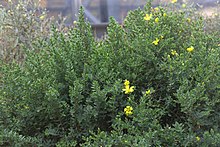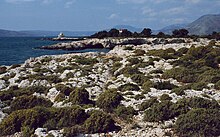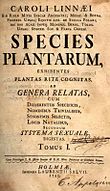
Hypericum perforatum, commonly known as St John's wort, is a flowering plant in the family Hypericaceae and the type species of the genus Hypericum. It is a perennial that grows up to one metre tall, with many yellow flowers that have conspicuous black glands around their edges, long stamens, and three pistils. Probably a hybrid between close relatives H. attenuatum and H. maculatum that originated in Siberia, the species now has a cosmopolitan distribution. It is native to temperate regions across Eurasia and North Africa, and has been introduced to East Asia, Australia, New Zealand, and parts of North and South America. In many areas where it is not native, H. perforatum is considered a noxious weed. It densely covers open areas to the exclusion of native plants, and is poor grazing material. As such, methods for biocontrol have been introduced in an attempt to slow or reverse the spread of the species.

Hypericum is a genus of flowering plants in the family Hypericaceae. The genus has a nearly worldwide distribution, missing only from tropical lowlands, deserts and polar regions. Many Hypericum species are regarded as invasive species and noxious weeds. All members of the genus may be referred to as St. John's wort, and some are known as goatweed. The white or pink flowered marsh St. John's worts of North America and eastern Asia are generally accepted as belonging to the separate genus TriadenumRaf.

Hypericum androsaemum, the shrubby St. John's wort, is a flowering plant in the family Hypericaceae. Commonly called tutsan or sweet-amber, the species is cultivated as an ornamental plant because of its striking red-tinted foliage, bright yellow petals, and its large clusters of fruit. Cultivars like 'Albury Purple' and 'Golden Tutsan' which have leaves with more pronounced purple and golden coloring, respectively.
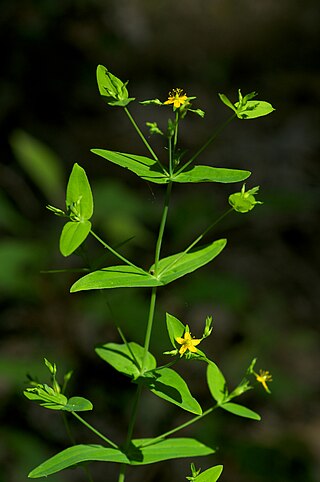
Hypericum mutilum is a species of St. John's wort known by the common name dwarf St. John's wort. It is native to parts of North America and is present in other parts as an introduced species. It is an annual or perennial herb taking a multibranched erect form up to about 60 centimeters tall. The oval green leaves are one or two centimeters long and are covered in tiny glands. The inflorescence is a compound cyme of tiny flowers. H. mutilum subsp. mutilum and subsp. boreale have a diploid number of 16, and H. mutilum subsp. boreale can have a diploid number of 18.
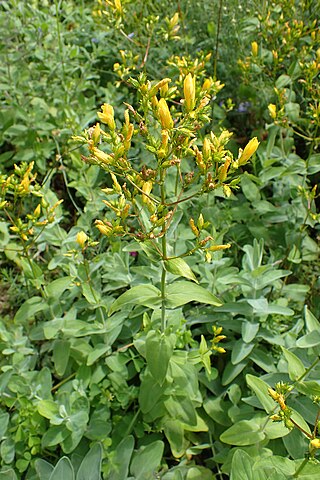
Hypericum annulatum is a species of flowering plant in the family Hypericaceae. It is a perennial herb of varying heights which grows upright, with more than a hundred flowers of a golden yellow color. First described in 1827, the species has a wide distribution from Eastern Europe to East Africa, and its appearance can vary greatly based on its geographic location. It has been used in Bulgarian folk medicine, and has more recently been investigated for its effectiveness in slowing the growth of or killing certain types of human cancer.

Hypericum boreale, also known as northern St. John's-wort, is a short-lived perennial species of flowering plant in the family Hypericaceae, section Trigynobrathys.

Hypericum sect. Adenosepalum is one of 36 sections in the genus Hypericum. Its type species is Hypericum montanum.
Hypericum edisonianum, known as Arcadian St. John's wort, Edison's St. John's wort, and Edison ascyrum, is a species of flowering plant in the St. John's wort family, Hypericaceae. It is endemic to Florida.

Hypericum phellos is a species of shrub or small tree in Hypericumsect. Brathys. The species is found in Colombia and Venezuela on scrubby slopes and moist woods.

Hypericum denticulatum, the coppery St. John's Wort, is a perennial herb in the flowering plant family Hypericaceae. It is native to the Eastern United States. The species has two varieties, H. denticulatum var. recognitum and H. denticulatum var. acutifolium. The herb has a diploid number of 24 or 48.

Hypericum majus, the greater Canadian St. John's wort, is a perennial herb native to North America. The specific epithet majus means "larger". The plant has a diploid number of 16.

Hypericum lancasteri, known as Lancaster's St. John's wort or as zhan e jin si tao in Chinese, is a species of flowering plant in the St. John's wort family Hypericaceae. The species has been awarded the Royal Horticultural Society's Award of Garden Merit.

Hypericum oblongifolium, known as Pendant St. John's wort, is a species of flowering plant in Hypericumsect. Ascyreia.

Hypericum formosissimum is a species of flowering plant in the family Hypericaceae, section Adenosepalum, in the Hypericum huber-morathii group.

Hypericum aucheri, also known as Koramanotu in Turkish, is a herbaceous perennial flowering plant in the St. John's wort family Hypericaceae.

Hypericum coris, the heath-leaved St. John's wort, also called yellow coris, is a species of flowering plant in the family Hypericaceae, and is the type species of sect. Coridium. It is a low shrub, and it is found in Switzerland and northwestern Italy. The species has been a popular garden plant since the 18th century, valued for its long flowering period and for how well it adapts to cultivation.

Hypericum heterophyllum is a flowering plant in the Hypericaceae family and is the only species in Hypericum sect. Heterophylla.
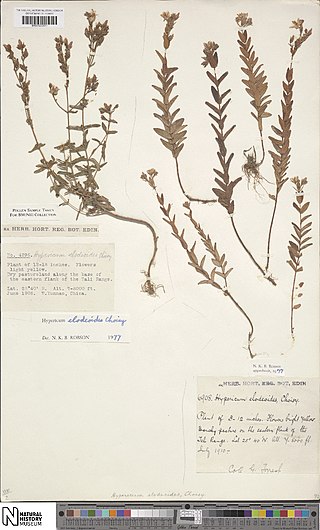
Hypericum elodeoides, commonly called the Himalayan St. John's Wort, is a species of flowering plant of the St. John's wort family (Hypericaceae).

Hypericum orientale, the Ptarmic-leafed St. John's wort or Eastern St. John's wort, is a flowering plant in the family Hypericaceae. It is distributed across northern Turkey, Georgia, the Caucasus, and Dagestan. The species can be found on stony sloped amidst volcanic rocks in the mountains and in light woodlands at elevations of up to 2,300 m (7,500 ft). It flowers from May to June and July to August. The plant has small, bright yellow flowers and grows across the ground in a creeping pattern. It prefers full sun and is ideal for rock gardens, and is hardy down to -30°F.
